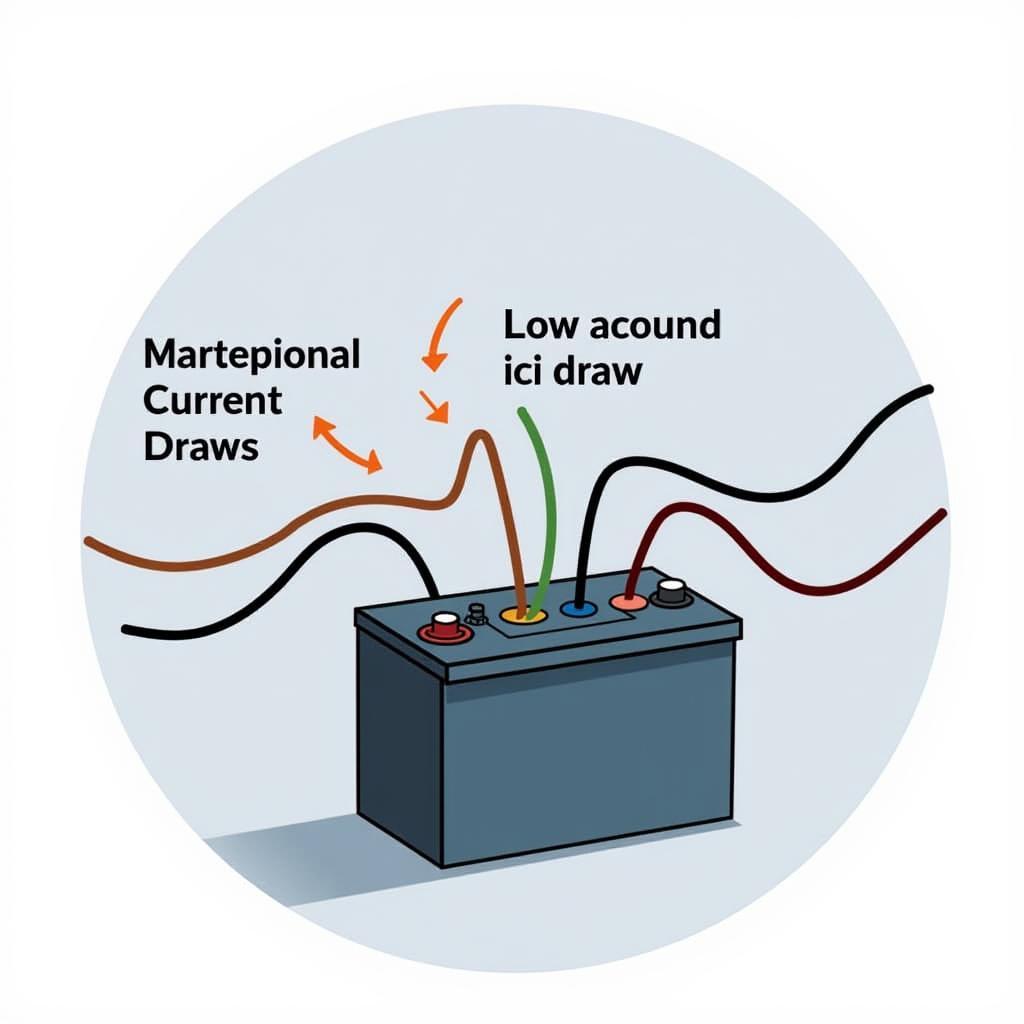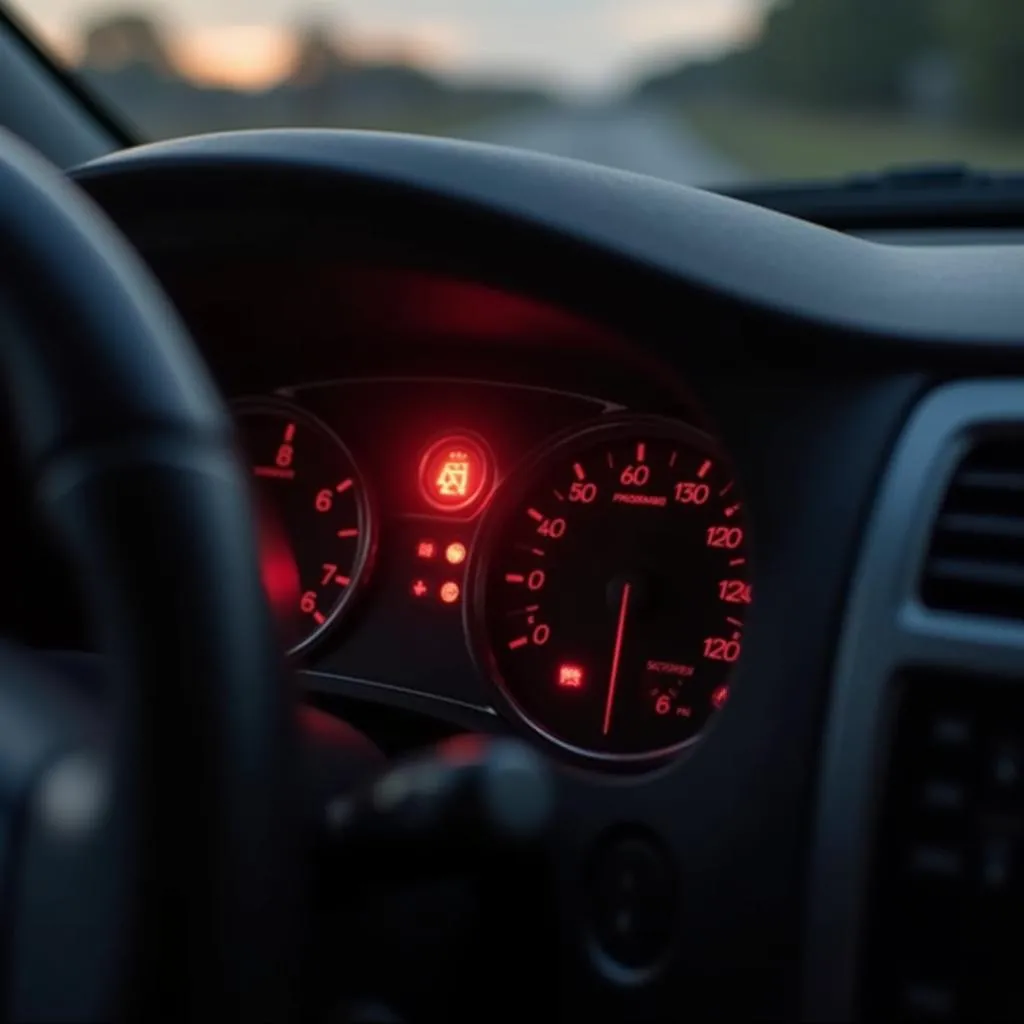A dead car battery is frustrating, especially if it happens repeatedly. Often, the culprit isn’t a bad battery but a parasitic drain. This guide will show you how to test for parasitic drain on car battery, helping you pinpoint the power-hungry device and get back on the road. After reading this, you’ll be able to diagnose and fix the issue like a pro. Let’s dive in.
Understanding Parasitic Battery Drain
What exactly is a parasitic drain? It’s a constant drain on your car’s battery even when the ignition is off. Many electronic components, like the clock, radio memory, and alarm system, require a small amount of power to function. However, a faulty component, a stuck relay, or even a glove box light left on can draw excessive current, leading to a dead battery. Identifying and eliminating these drains is key to maintaining a healthy battery. Check out this article if your car wont stay charged.
 Parasitic Drain Illustration
Parasitic Drain Illustration
How to Test for a Parasitic Draw
Testing for a parasitic drain requires a few simple tools: a multimeter and some patience. Here’s a step-by-step guide:
- Safety First: Disconnect the negative battery cable. This prevents shorts and ensures accurate readings.
- Multimeter Setup: Set your multimeter to the DC amps setting. Most meters have a 10A or 20A range, which is suitable for this test.
- Connect the Multimeter: Connect the red lead of the multimeter to the negative battery terminal and the black lead to the negative battery cable. The multimeter is now in series, measuring the current flow.
- Observe the Reading: A healthy drain should be less than 50 milliamps (0.05 amps). Anything significantly higher indicates a parasitic drain. If you see a high reading, your new car battery wont hold charge even if it’s brand new.
- Isolate the Culprit: Begin pulling fuses one at a time while observing the multimeter. A significant drop in the reading when a particular fuse is removed identifies the circuit with the problem.
What is a Normal Parasitic Drain?
A normal parasitic drain is typically very low, usually around 25-50 milliamps. This small current keeps essential systems functioning. However, anything significantly above this range should be investigated.
Common Causes of Parasitic Drain
Several common issues can cause excessive battery drain:
- Interior Lights: A forgotten glove box light, trunk light, or dome light can be a significant drain.
- Faulty Door Switches: A malfunctioning door switch can trick the car into thinking a door is open, keeping interior lights on. You might even see the battery low warning light flickering.
- Bad Alternator: While less common, a faulty alternator can drain the battery.
- Aftermarket Accessories: Improperly installed aftermarket accessories, like stereos or alarms, can be a major source of parasitic drain. This is particularly important to remember if you’ve recently added any new electronics.
“Always check the simplest things first, like interior lights and glove box lights. These are surprisingly common culprits,” advises John Smith, Senior Automotive Electrical Engineer at AutoTech Solutions.
Preventing Parasitic Drains
Preventing parasitic drains can save you time, money, and frustration. Here are some tips:
- Double-Check Interior Lights: Make sure all interior lights are off before leaving your car.
- Inspect Aftermarket Installations: Ensure any aftermarket accessories are installed correctly by a qualified professional.
- Regular Battery Testing: Have your battery tested regularly, especially as it ages. If you’re having trouble finding the source of the drain, learn how to find battery drain in car. Even an EV can suffer from this, so check out our article on the ioniq 5 dead battery for more insights.
Conclusion
Testing for a parasitic drain on your car battery is a straightforward process that can prevent unexpected dead batteries. By understanding the process and following these steps, you can keep your car’s electrical system healthy and avoid the inconvenience of a dead battery. Don’t let a parasitic drain leave you stranded. Take control and test your car battery today!


